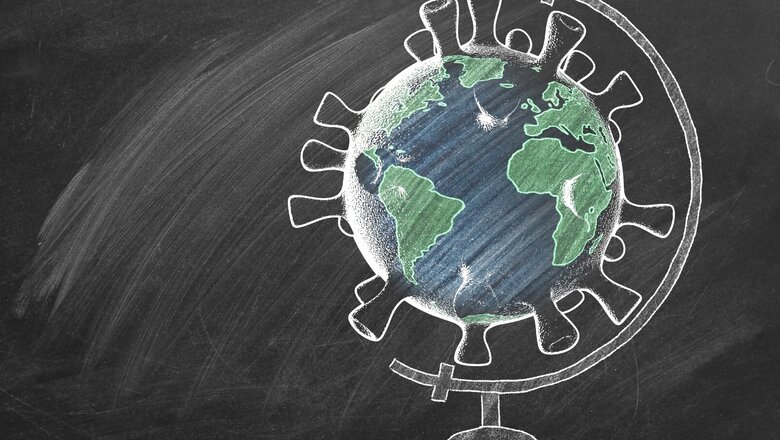
views
Conversations around climate change and the global rise in temperature are now part of our living rooms and workplaces, and not just international conferences and seminars. While these conversations have transgressed boundaries, they are still limited in terms of being discussed by adults. Young minds in schools due to lack of awareness around the subject hardly get a chance to learn early. As we head towards more serious and frequent disastrous events such as droughts, forest fires, hurricanes, it is extremely important that we make climate change education in schools the key to addressing the issue.
Ever since 2018, then a 15-year-old Swedish activist Greta Thunberg started the school climate strikes, several children across the globe have followed her. As they took to the streets, they also demanded that schools integrate climate change in their curriculum, emphasising how children can better comprehend the urgency of the situation through learning about it at school. UNESCO in May 2021 said that environmental studies should be standard teaching in all countries by 2025. Similarly, various international organisations and pressure groups have asked for inclusion of climate change education in all school curricula.
ALSO READ | Earth Day: India Finds Itself in Catch-22 Situation, Ecosystem-based Adaptation a Ray of Hope
However, pursuing such a goal has been fraught with obstacles and hurdles. Implementation, particularly during a pandemic, has not been a successful change. Right before the UN Climate Change Conference was held in Glasgow last year, UNESCO published a report titled ‘Getting every school climate-ready’. According to the report, climate change themes are not effectively integrated into the curriculum in around 47 per cent of the countries.
Discussions around climate change have not been constant. They just about started in the early 20th century when people started talking about how fossil fuels are changing our climate, to more inquisitiveness in the 1930s, to finally taking it seriously 1950s onwards. The importance of teaching climate change to children might not have been felt a century ago. But today the need is urgent because these young people will lead and change the world tomorrow.
India is one of the few countries where environmental education is compulsory at all levels of schooling. The Supreme Court order making it a compulsory topic in schools across the country in 1991 came on a PIL filed by M.C. Mehta. But most of this learning is related to environment literacy and is extremely textbook-based. Climate change is not given enough importance as it should be. The need of the hour is to move beyond books and highlight through various ways the state of crisis we are facing.
How Can Environmental Education Help Combat Climate Change?
There are six “tipping interventions” identified by the Potsdam Institute for Climate Impact Research that could slow climate change. One of them is climate change education. That is how important it is. We are already living in a state of global emergency. The knowledge of assimilating information, calculating risks, preparing for climate crises and recovering from their effects can help us become better prepared for the battle we are fighting. The curriculum can assist in instilling positive behavioural changes in students. It can also influence how individuals envision the future they want and how hard they must try to achieve it.
Educating at an early age not only provides information but also makes children mindful about what can be better and alternative approaches to the problem. It also helps them realise that like everyone else they are also active stakeholders in achieving the supported goal of reducing net emissions to zero. To create global, responsible citizens, education about climate change is urgent and widely significant.
ALSO READ | Why Climate Change Talk Must Focus on Water, Not Just Stay Obsessed with Carbon
What Needs To be Done
Topics related to environmental concerns should be taught at all levels of learning. From primary schools to universities, mandating sessions on climate change has become a necessity.
Apart from this, climate change has to be taught beyond textbooks. It can’t be just placed under environmental literacy. It is real and much beyond that. Creative expressions, quizzes, exhibitions, science fairs are some stimulating ways of teaching children. Small initiatives like saving water, planting trees, and walking in local parks are some other approaches to make children aware and more rational. If the curriculum and subsequently the sessions are planned around daily lives of children, these will better aid in communicating the necessary message.
It is Now or Never
It’s becoming hotter by the day. There is an urgent need to cut greenhouse gas emissions and begin the transition to a more sustainable way of life. This change will be led by the younger generation. However, this will not be achieved unless they are made aware from an early age that there is no Planet B. There is no more time left for us to remain blind to the importance of school education and raising awareness on climate change. The next generation will experience the consequences of climate change more profoundly. We have enough evidence to prove that without equipping people from a young age to lead a sustainable and planet-friendly life, we will not be able to achieve the lofty goals and targets we have set for ourselves at global conferences.
Mahek Nankani is Assistant Programme Manager, The Takshashila Institution. The views expressed in this article are those of the authors and do not represent the stand of this publication.
Read all the Latest Opinions here



















Comments
0 comment